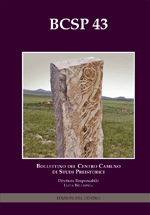JUIFS ET NABATÉENS:Les monarchies ethniques du Proche-Orient hellénistique et romain
…Comment les monarques juifs et nabatéens parvinrent-ils à incarner leur ethnicité ? Quelle était l'identité officiellement assumée par ces souverains ? Par quels moyens l'imagerie officielle affichait-elle l'appartenance à un ethnos particulier, tout en revendiquant, le plus souvent, pour le monarque un statut équivalent aux autres rois contemporains ? Cette ethnicité proclamée, qui semble toujours plus ou moins s'inscrire dans un contexte de bilinguisme culturel, n'était-elle pas fondamen...
Lire la suite
- Éditeur : Presses universitaires de Rennes
- Collection : Histoire
- Lieu d’édition : Rennes
- Année d’édition : 2013
- Publication sur OpenEdition Books : 17 juillet 2019
- EAN (Édition imprimée) : 9782753522299
- EAN électronique : 9782753569188
- Nombre de pages : 310 p.
Les formats HTML, PDF et ePub de cet ouvrage sont accessibles aux usagers des bibliothèques et institutions qui l'ont acquis dans le cadre de l'offre OpenEdition Freemium for Books. L'ouvrage pourra également être acheté sur les sites de nos libraires partenaires, aux formats PDF et ePub. Si l’édition papier est disponible, des liens vers les librairies sont également proposés sur cette page.









































 VCS 68
VCS 68 VCS 72
VCS 72 VCS 2007
VCS 2007 VCS 2009
VCS 2009
 VCS 2013
VCS 2013 VCS 2015
VCS 2015






